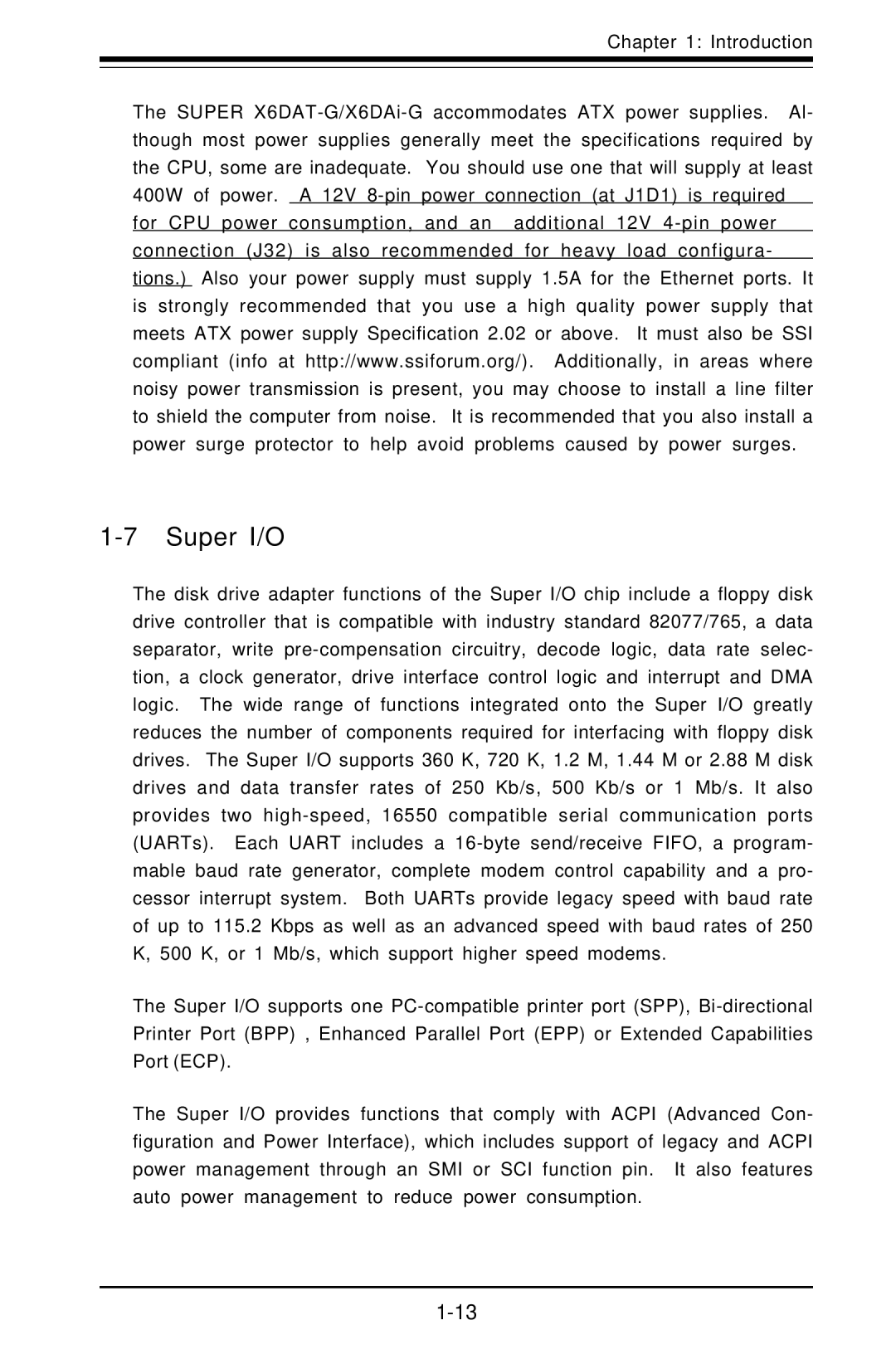
Chapter 1: Introduction
The SUPER
for CPU power consumption, and an additional 12V
1-7 Super I/O
The disk drive adapter functions of the Super I/O chip include a floppy disk drive controller that is compatible with industry standard 82077/765, a data separator, write
The Super I/O supports one
The Super I/O provides functions that comply with ACPI (Advanced Con- figuration and Power Interface), which includes support of legacy and ACPI power management through an SMI or SCI function pin. It also features auto power management to reduce power consumption.
